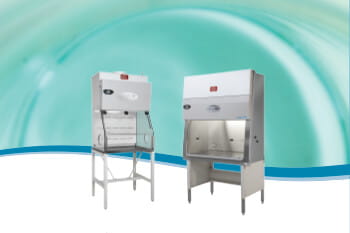
White Paper
Industry Standards Your Biosafety Cabinet Should Meet
Biosafety cabinets, also known as biological safety cabinets or microbiological safety cabinets, are enclosed, ventilated workspaces used in research, hospital, education, and industry laboratories. Follow along as we explore the differences between biological safety cabinet standards. Need additional information? Explore our resources section on biological safety cabinet standards, lab design, and more.
What is a biological safety cabinet?
A biological safety cabinet (BSC) is a ventilated enclosure designed to provide personnel, product, and environmental protection during the handling of potentially hazardous biological materials.
How are Biological Safety Cabinets Classified?
Biological safety cabinets (BSCs) are classified into three types based on their level of protection:
- Class I: These cabinets protect personnel and the environment from aerosols (if exhausted) and biological agents but do not provide protection for the products being handled. They are suitable for basic biosafety needs.
- Class II: These are the most commonly used BSCs. They protect personnel, products, and the environment. They are ideal for work involving biological agents or hazardous drugs where product sterility and containment of hazards are crucial.
- Class III: Known as total containment cabinets, these provide the highest level of protection for personnel, products, and the environment. They are specifically designed for handling BSL-4 pathogens and work requiring maximum containment.
What industries benefit from using biological safety cabinets?
Biosafety cabinets are used in various industries, including medical and biological research, drug preparation, and medical diagnostics, to create a clean and consistent environment.
What standards govern biological safety cabinets?
The primary standards for biosafety cabinets are NSF/ANSI 49 and EN 12469, with NSF/ANSI 49 being the "gold standard" in the US, and EN 12469 being used in Europe. These standards provide cabinet construction and performance guidelines to ensure a safe working environment.
Looking for more information about NuAire’s Biological Safety Cabinets? Explore our product line, discover some of NuAire’s most popular configurations in our Quick Ship selection, or watch an unboxing video for NuAire’s Class II Biosafety Cabinet.
Searching for a custom-built biosafety solution? NuAire is an industry leader in custom built biological safety cabinets. Contact us for more information.
